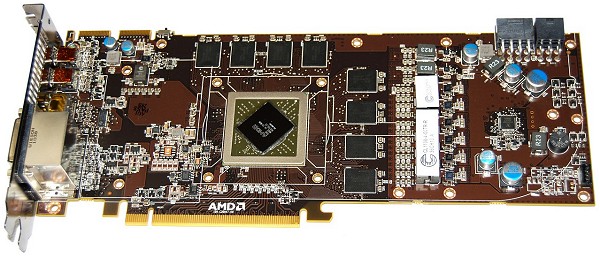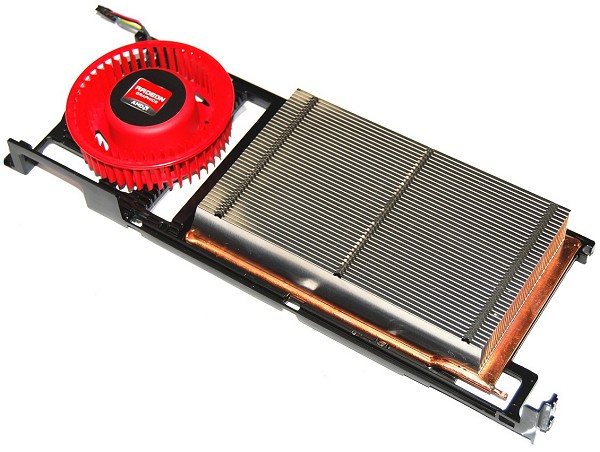Radeon HD 6970 Board in Detail
The Radeon HD 6970 measures 27cm long (10.6 in), the typical length for today's high-end graphics cards. For example, the old Radeon HD 4870 X2 graphics card measured 28cm long, as did the more recent Radeon HD 5870. The Radeon HD 6970 is also the same length as the new GeForce GTX 580 graphics card.

As its predecessor, the Radeon HD 6970 GPU has been fabricated using the 40nm process, yet AMD has squeezed in 486 million more transistors and as a result the die size has increased by 16%.

The GPU core is clocked at 880MHz, 3.5% higher than the Radeon HD 5870, while the GDDR5 memory also operates slightly faster at 1375MHz. Pairing that frequency with a 256-bit wide memory bus gives the Radeon HD 6970 176GB/s of theoretical bandwidth, a 14.5% advantange over the HD 5870.



The Radeon HD 6970 also differs from the older HD 5870 on its core configuration. Whereas the HD 5870 featured 1600 SPUs, 80 TAUs and 32 ROPs, the new HD 6970 boasts of 1536 SPUs, 96 TAUs, and the same 32 ROPs (4% less SPUs and 20% more TAUs).

Cooling the "Cayman XT" GPU is a fairly large aluminum vapor chamber heatsink made up of 39 fins measuring 13.5cm long, 6.5cm wide, and 2.5cm tall. The vapor chamber design was first implemented in the Radeon HD 5970 and has recently also been adopted by Nvidia with their GeForce GTX 580 and GTX 570 graphics cards. Finally, cooling this heatsink is a 75x20mm blower fan that draws air in from within the case and pushes it out through the back.

For the most part this fan operates very quietly, helped by the impressively low 20 watt idle consumption of the Radeon HD 6970. When gaming the fan will of course spin up, as the card can consume up to 250 watts under load. This is 33% more than the Radeon HD 5870, but even with the increased thermal stress it didn't scream at intolerable levels.

The heatsink and fan have been enclosed within a custom built housing that conceals the entire graphics card, a common practice for AMD when designing their most elite graphics cards. We actually like this setup, as it helps protect the product very well. Nvidia has also done this in the past with their most prized graphics cards, such as the GeForce GTX 295 (dual GPU), though they have not used this design for their most recent flagship product the GeForce GTX 580.

In order to feed the card enough power AMD includes an 8-pin and a 6-pin PCI Express power connector. This is the same setup that you will find on the Radeon HD 5970 (dual GPU) and GeForce GTX 580 graphics cards, so it's a configuration usually employed by the most demanding boards.

Naturally, the Radeon HD 6970 supports Crossfire and therefore in the standard position we find a pair of connectors for bridging two or more cards together. The only other connectors are on the I/O panel. Our AMD reference sample featured two dual DL-DVI connectors, a single HDMI 1.4a port, and two mini-DisplayPort 1.2 sockets.
It's worth noting that all Radeon HD 6970 graphics cards can support a max resolution of 2560x1600 on up to three monitors. With multi-stream hub using the mini-DisplayPort 1.2 sockets, the card can power up to six monitors.
